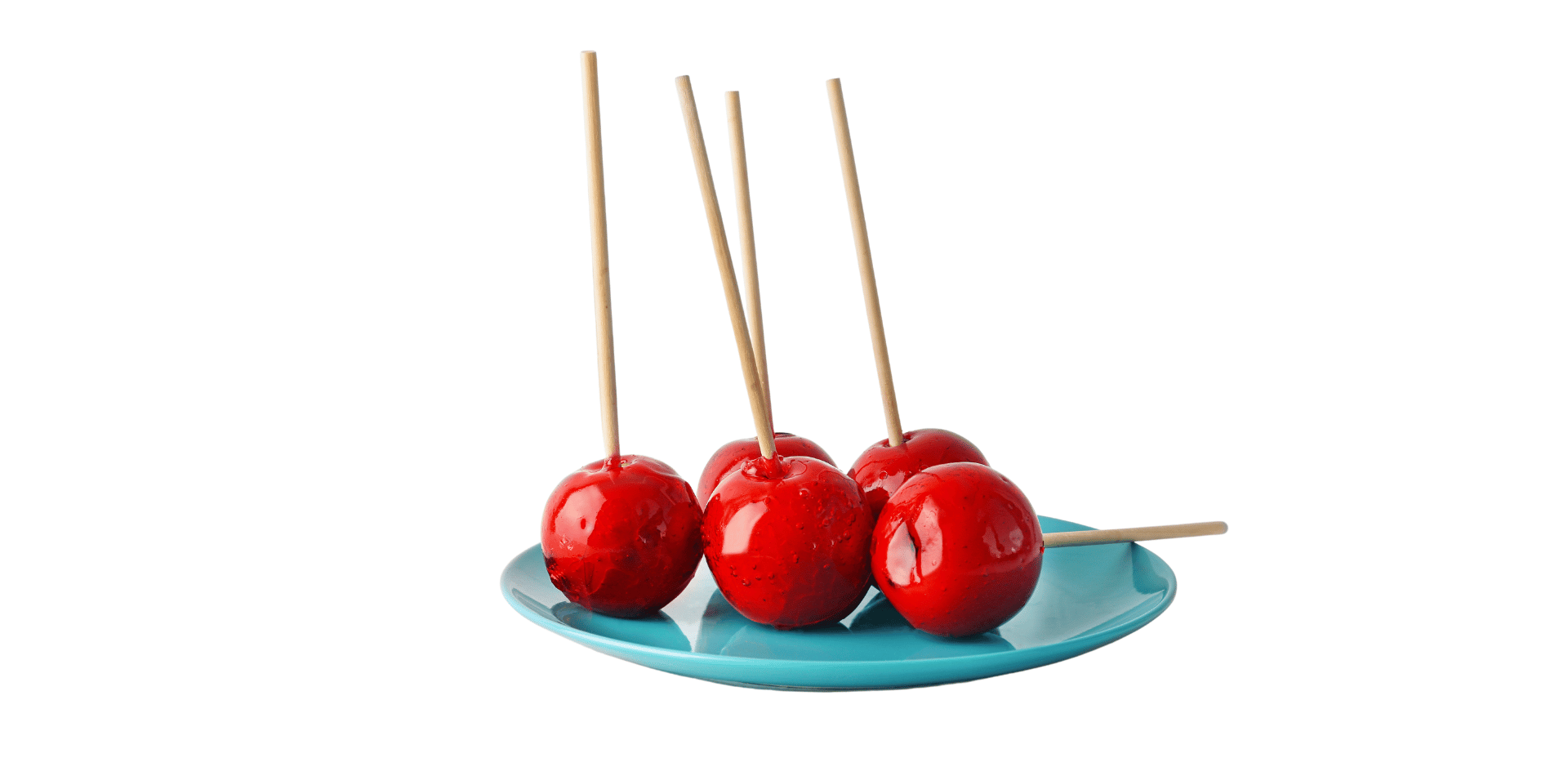
Toffee Apple Martini
Toffee Apple Martini
30ml Valli Premium Vodka
30ml Valli Apple Vodka
30ml Hunter Distillery Strawberry Liqueur
Shake ingredients over ice. Strain into a chilled martini glass. Garnish with a strawberry slice..
A Brief History of Toffee Apples
Toffee apples, also known as candy apples in some regions, are whole apples covered in a hard toffee or sugar candy coating, often with a stick inserted as a handle.
Their history is a fusion of the longstanding appreciation for apples and the more recent innovation of candy-making techniques.
Here's a brief overview of their origin and history:
Ancient Appreciation of Apples: Apples have been consumed by humans for thousands of years.
They hold a place in many ancient cultures, from the Greeks to the Romans, often representing knowledge, temptation, or abundance. While these ancient civilisations didn’t make toffee apples, their love for apples set the stage for the fruit's continued popularity.
Emergence of Candy-making: By the late 19th and early 20th centuries, refined sugar became more widely available, and confectionery techniques improved. Candy-makers began experimenting with different ways to use sugar, leading to various candy forms.
Invention in the USA: The candy apple (Toffee Apple) is believed to have been created in the early 20th century.
According to one popular account, a Newark candy-maker named William W. Kolb invented the candy apple in 1908. He was reportedly experimenting with red cinnamon candy for Christmas and dipped apples into the mixture as a test. The bright, glossy red apples were displayed in his shop window, attracting a lot of attention, and quickly became a popular treat, especially at Halloween.
Global Popularity: The idea spread beyond the US. In the UK, for instance, toffee apples became especially popular around Bonfire Night (Guy Fawkes Night) on November 5th. The combination of the crisp apple with the hard, sweet toffee coating resonated with many cultures around the world.
Variations: Over time, various versions and adaptations of the toffee apple emerged. There are caramel apples, which are coated with soft caramel instead of the hard candy shell, and those sprinkled with nuts, chocolate, or other toppings to add extra flavours and textures.
The toffee apple is a confluence of the ancient appreciation for apples and modern sweet-making techniques.
Its delightful contrast of textures and flavours, combined with its association with festive times, has cemented its place in confectionery history.
